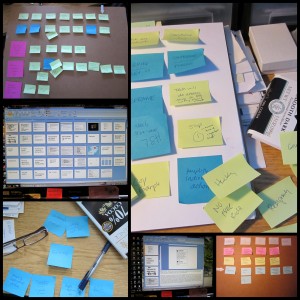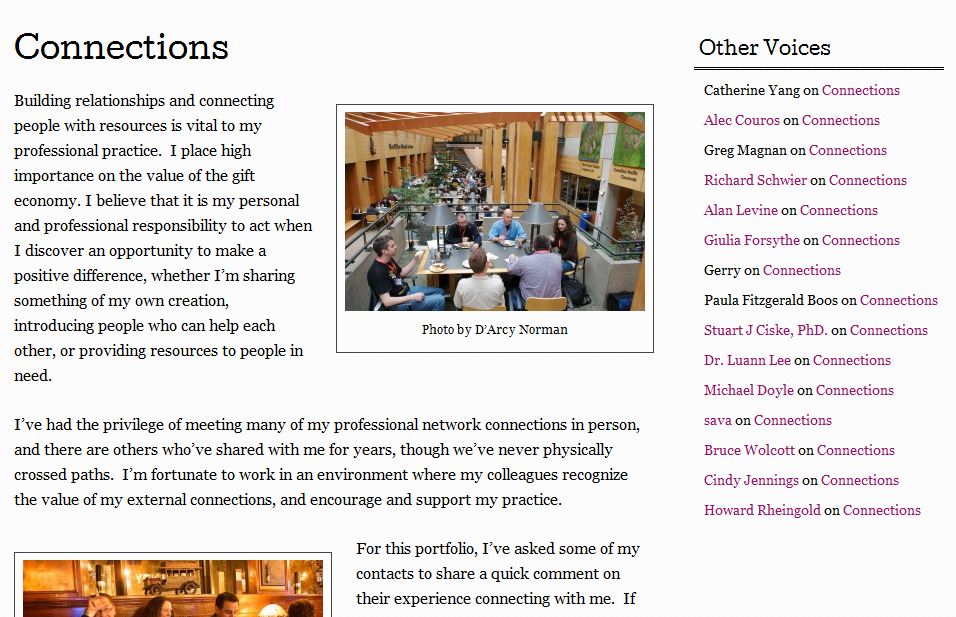Last week I had my first trip to Singapore and was a keynote speaker and workshop presenter at KM Singapore. My talk was entitled “The Heaven and Hell of Communities!” If you want the short version, a 2 minute recap can be found here. (I just blogged about the Graphic Facilitation workshop as well.) I want to thank the fabulous Edgar Tan, Wai Kong and Patrick Lambe of Strait’s Knowledge for hosting me. You guys ROCK!
I spent quite a bit of time thinking about this presentation, so I thought I’d share some of that process, acknowledge and thank those who helped me, and then share the slide set.
Process
My first instict was to use my communities and networks to “think out loud” about the tensions that are mounting in the productive and strategic use of communities and networks. Little did I realize that I was actually setting myself up for the very challenges I was trying to talk about. Filter failure. Lack of discrimination and strategy in how I tapped my networks. Too much on my plate. Mama mia. It was all in front of me, and I wasn’t even seeing it.

My first round was asking on Twitter for “radical ideas” about knowledge collaboration. Then I set up a Google Doc to start sharing my ideas and solicit comments. THEN I added one more mechanism, Google Moderator (which it turns out, I’m not so fond of) which gave me more diverse input. Then I started scanning more generally on my network and the “kismet” factor kept turning up more and more interesting and relevant links. These are still a disorganized mish mash on the Google doc. I think I’m not such a great Curator! (Robin, now you know why I was massively inarticulate on this topic when we last talked in Rome!) Thanks Jennifer, Dave, Eugene and Christopher and the rest of my network!
I was pretty darn well overwhelmed, so I let it all sit. Then a week before I was due to travel, I started with my “post it note” presentation planning, pulling out three main thoughts, supporting information, key anecdotes and at least 2 actionable suggestions for each main point. I begin to feel urgent, so I started dumping things into PowerPoint, with the intention of drawing the visuals for the slides once I had them set. But they just would NOT SETTLE in my mind or on the screen. So I decided to travel with things “unfinished.” Sometimes at the event, in the PLACE things fall into place. But I could not chase away some niggling worries.
I got a bit nervous as things had not fallen into place. Then the night before the keynote they did. David Weinberger’s keynote on day one totally resonated with what I wanted to talk about. Patrick Lambe’s talk analyzing the incident review of a major breakdown in Singapore’s public transit system told the perfect story validating the three points. In fact, almost every talk had a resonate point or reference. And somehow the language around the points got clearer as I reread some of my favorite work of friends. The idea of resilience instead of mitigation, of creative destruction to make room for strategic participation in communities and networks, and of conversations that matter all felt right.
As an aside, here are my Sketchnotes from some of the other presenters!
[slideshare id=14227608&doc=kmsingapore2012sketchnotes-120909221148-phpapp02]
Slides
The room at the Swissotel was pretty bright and images on previous slide sets were washing out. I usually use visually oriented slides – either photos or my own drawings. I realized a simple, bold text strategy might be better in this room, so that actually saved me some prep time. I rarely use text, but I think this worked out OK.
I was surprised how popular the slides were on Slideshare, even without any notes or narration. I was featured on Slideshare one day! Now I need to get the audio/video so there can be a bit more sense making.
[slideshare id=14196396&doc=heavenhellofcommsnetsfinalkmsg12-120906192628-phpapp02]
Feedback
The room seemed to feel some resonance with the messages. The group was fairly quiet through the whole two days of the event, so one would not expect whooping and shouting, but the follow up questions were very thoughtful and we continued some of these in the afternoon “Knowledge Market.” The three time horizons from Steve Waddell, the ideas I borrowed from the sustainability field around resilience instead of just mitigation and the chance to STOP doing something resonated. Patrick and I now want to work more on practices for creative destruction! Stay tuned for a workshop series.
All in all it was great fun.
Related Links and Event Artifacts


